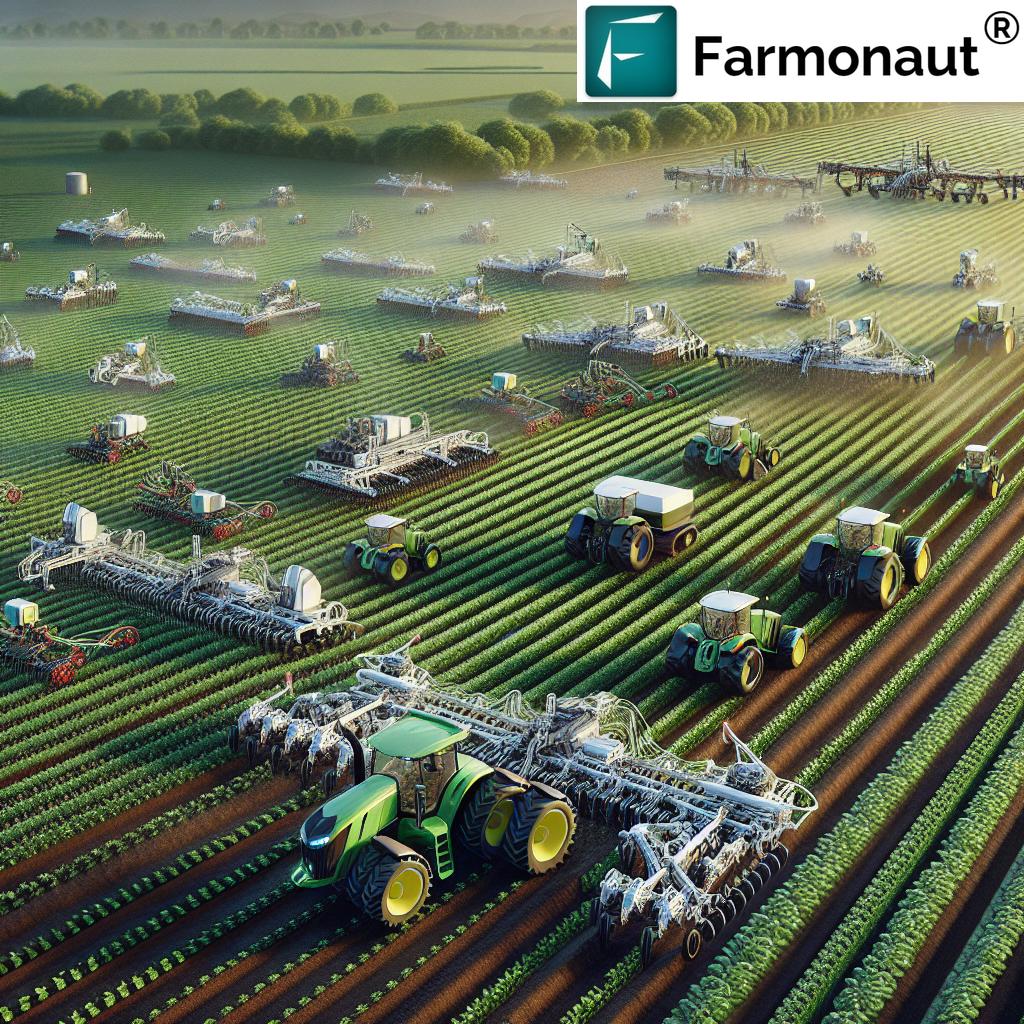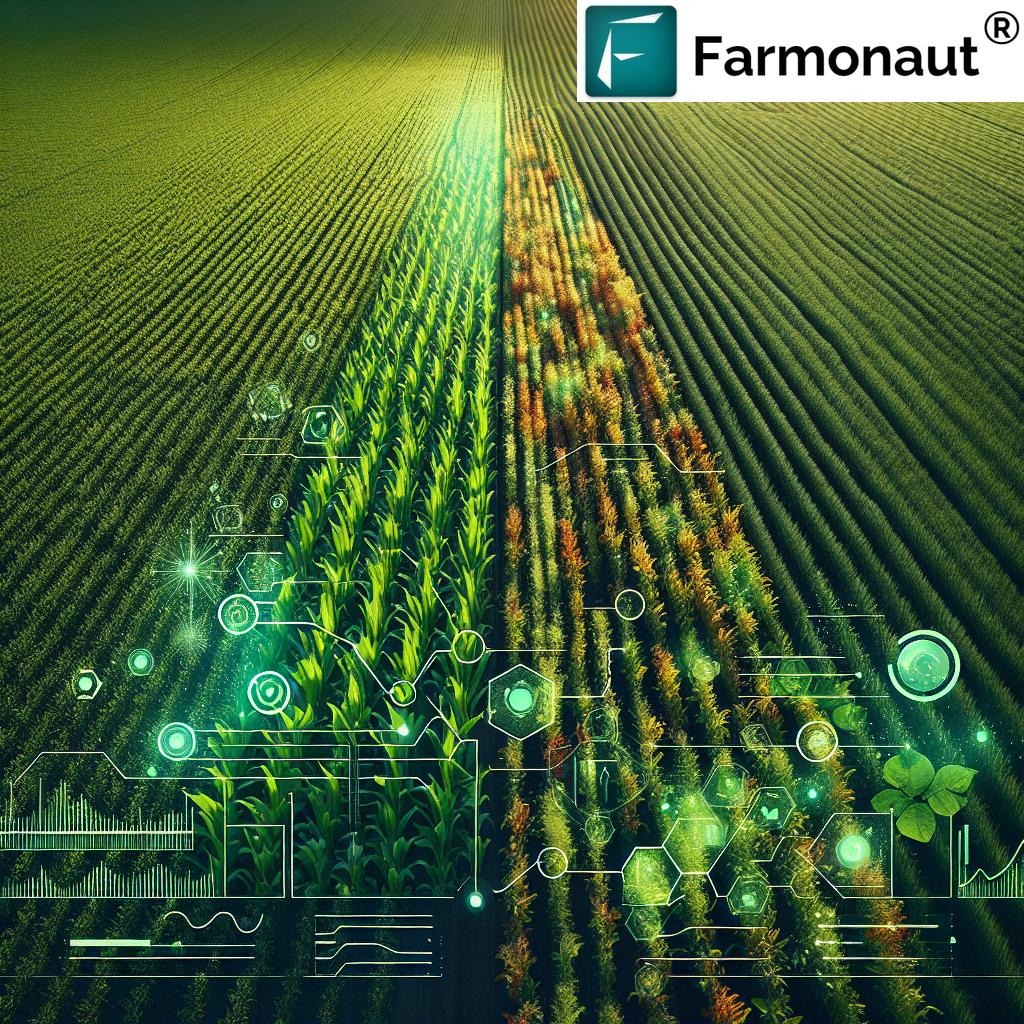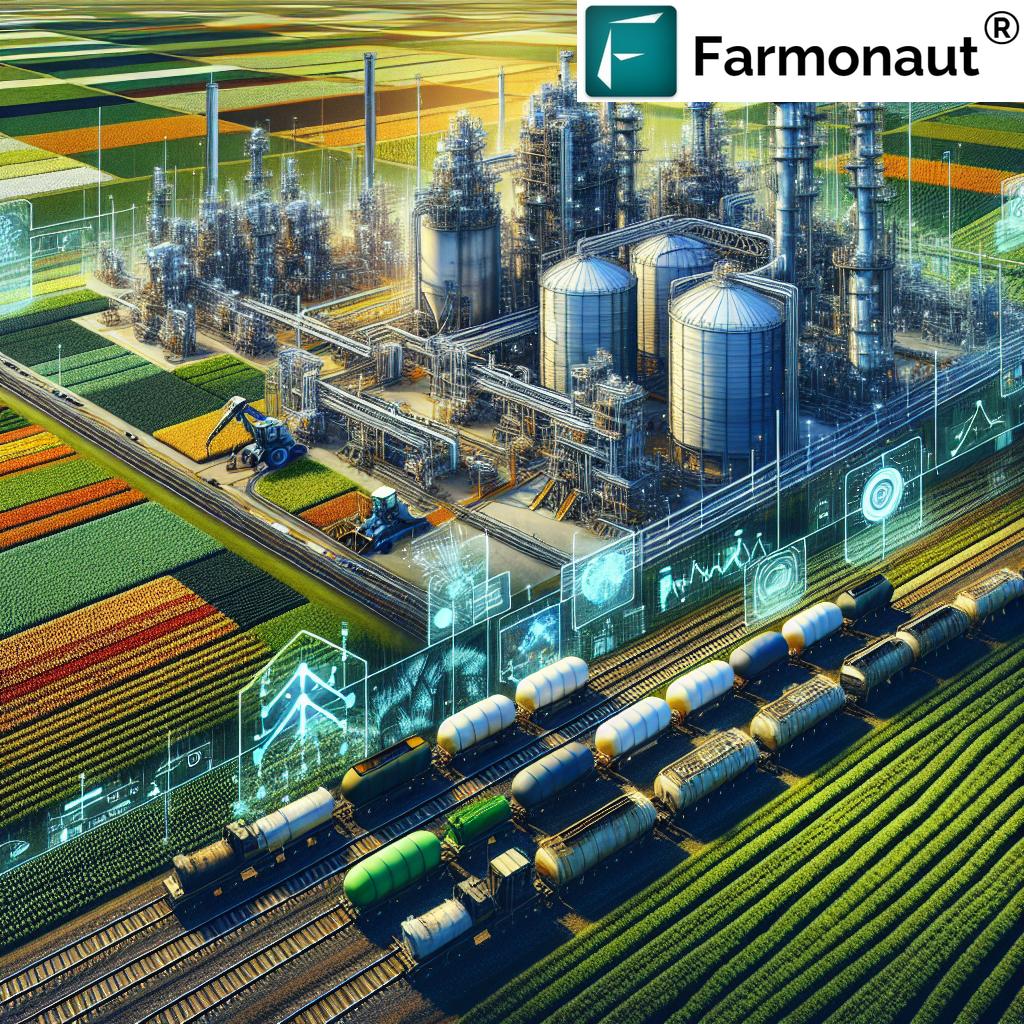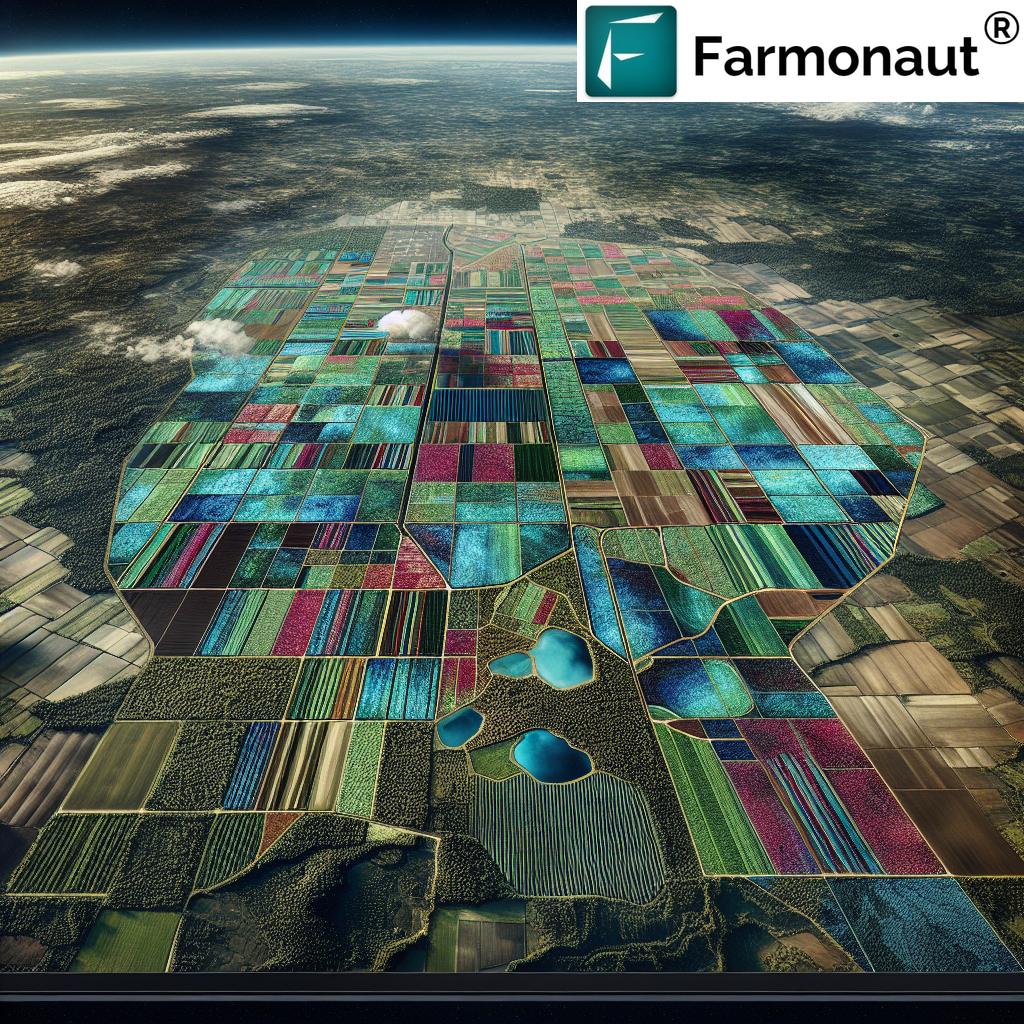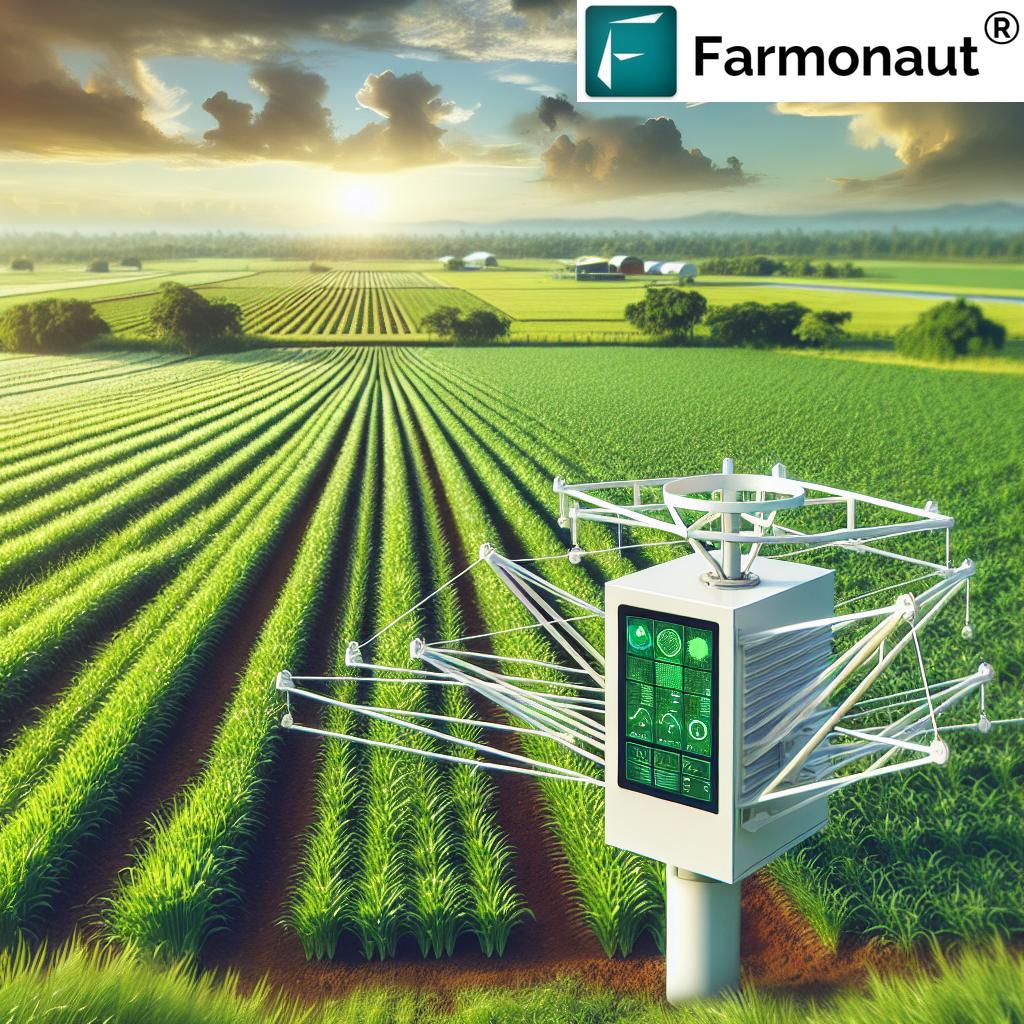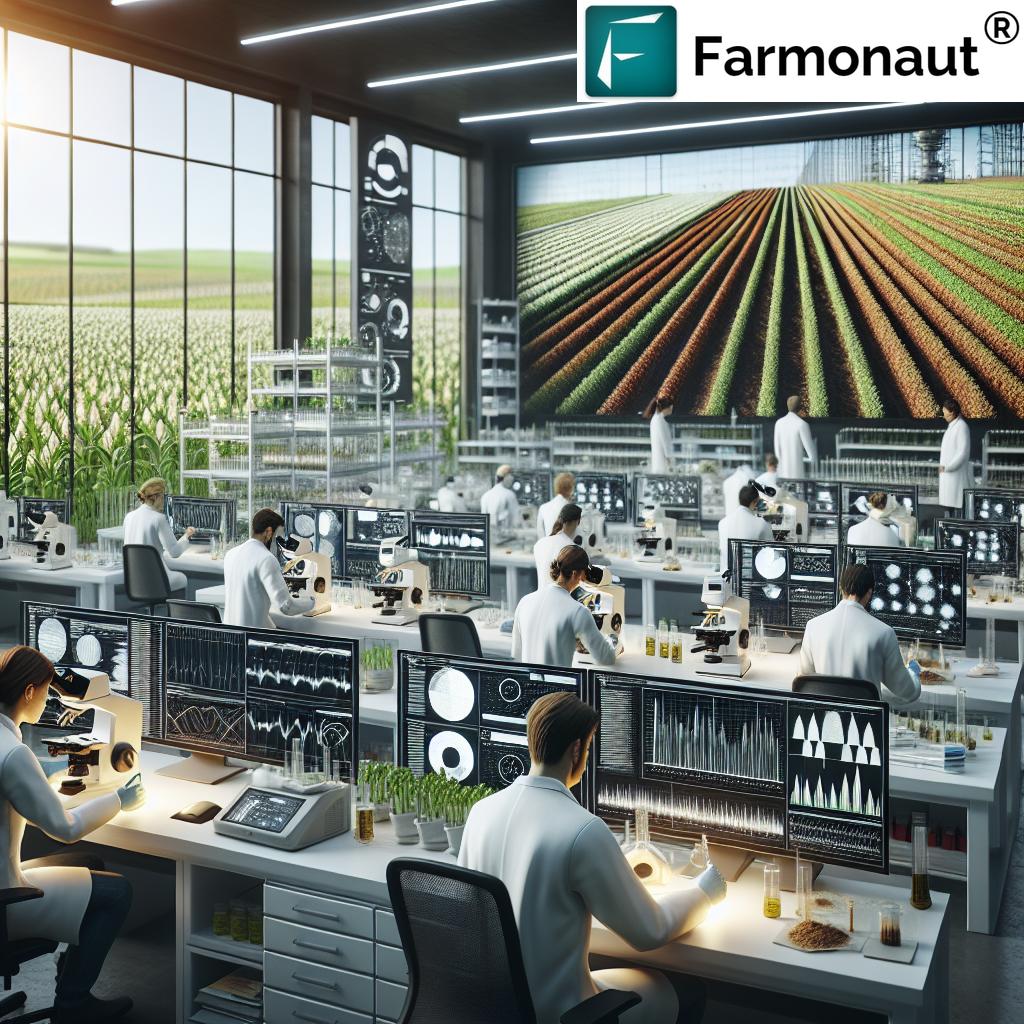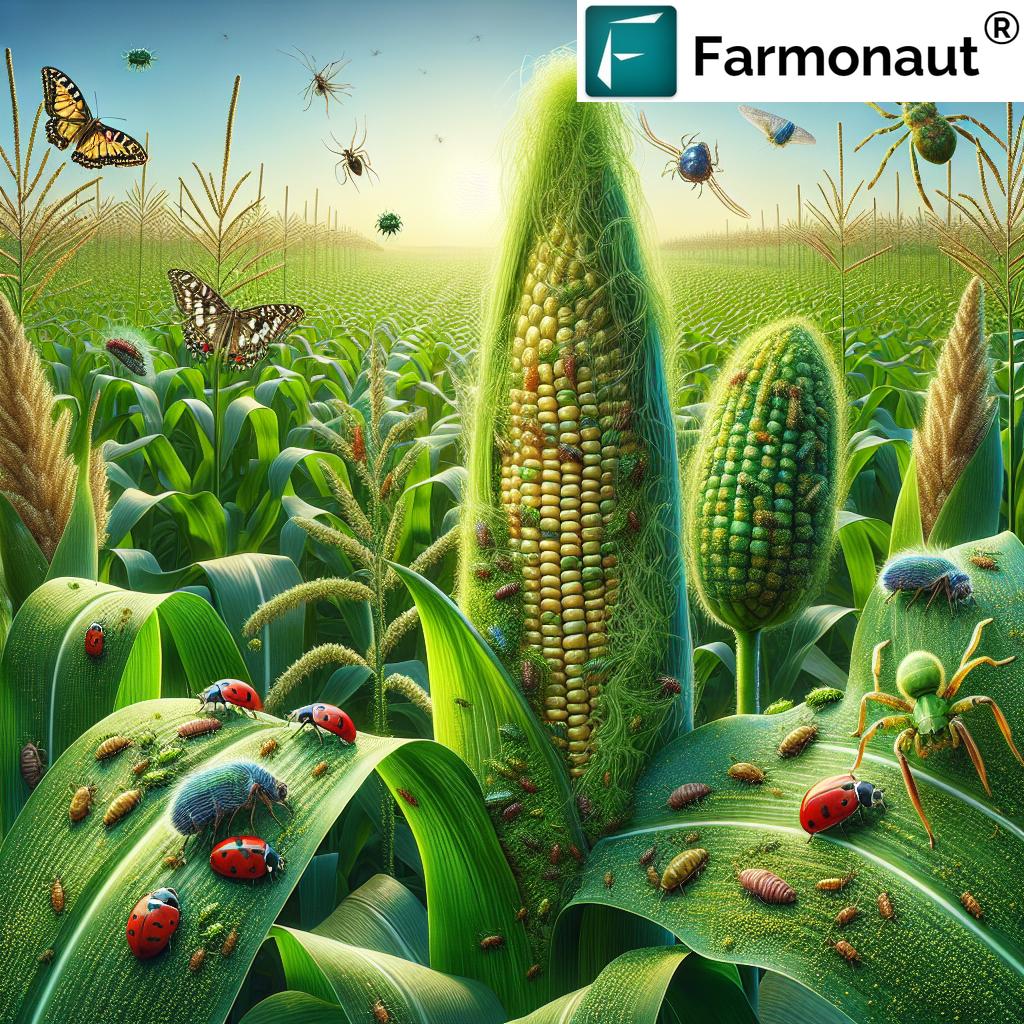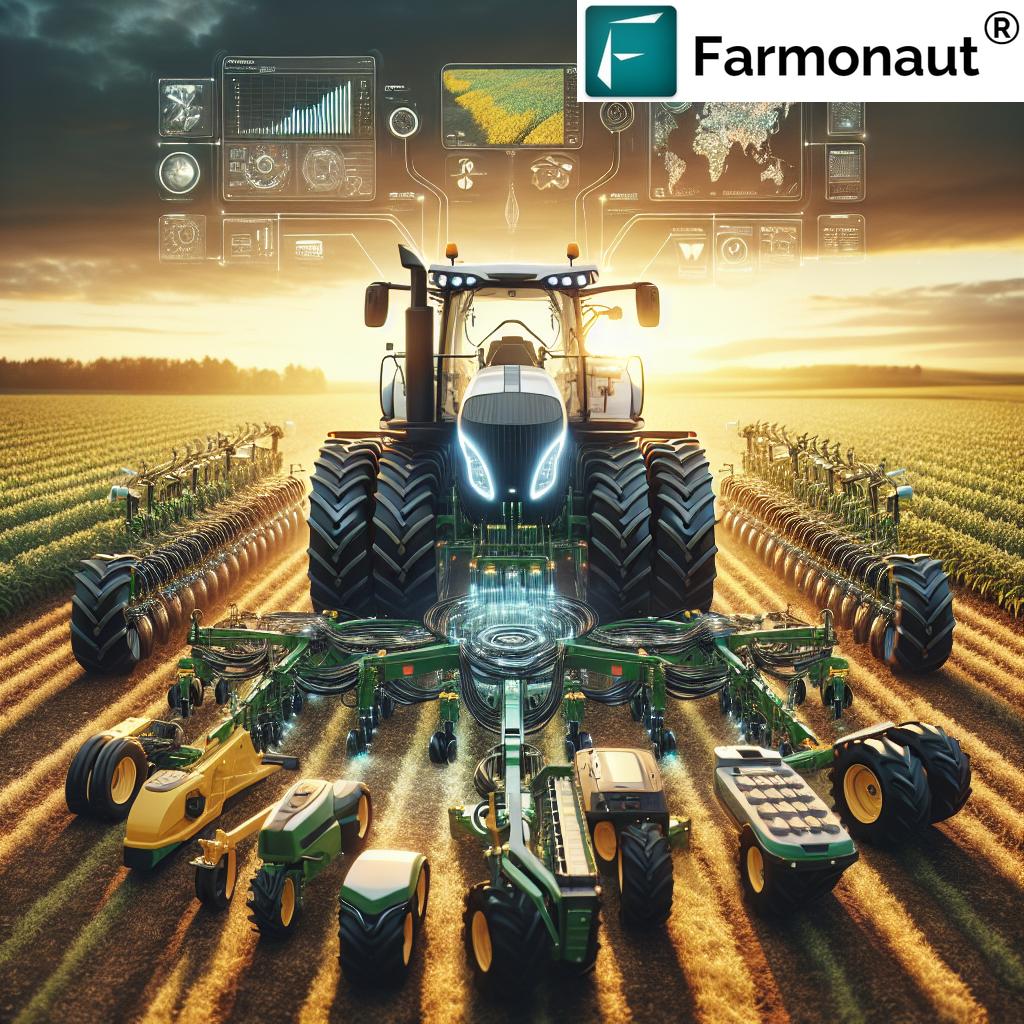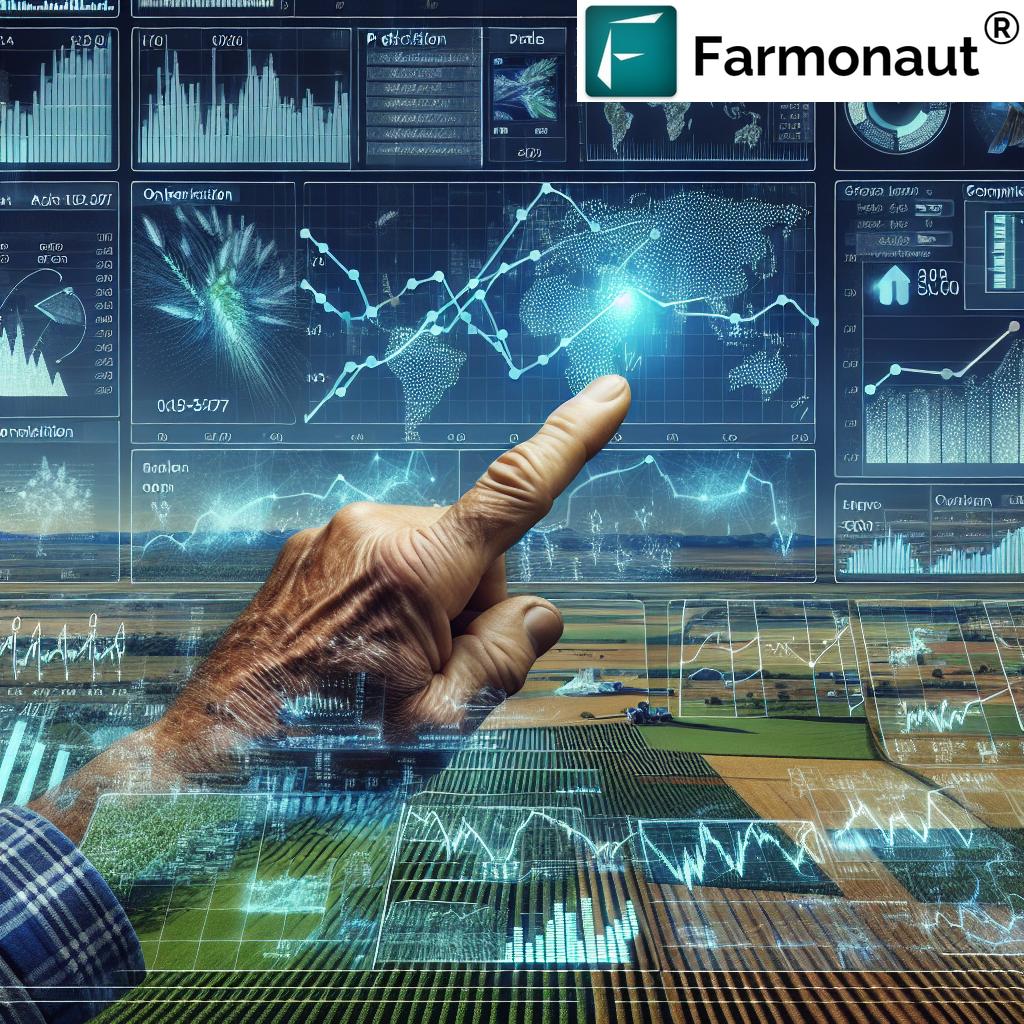Agriculture Tools: 10 Shocking Upgrades You Need Now
Ultimate Guide to Agricultural Tools, Modern Farming Machinery, and Precision Agriculture Technology
Table of Contents
- Trivia: Precision Seeders Increase Planting Efficiency
- Introduction: The Evolution of Agricultural Tools
- History of Agricultural Advancements
- Traditional Agricultural Tools and Implements
- 10 Shocking Upgrades in Modern Agriculture Tools
- Comparative Feature-Benefit Table of Top 10 Tools
- Farmonaut: Bringing Data Analytics and Satellite Technology to Precision Agriculture
- Sustainable Farming Practices: Tools & Technology
- Impact of Modern Tools on Farming, Forestry & Economy
- Farmonaut Subscription Plans
- Frequently Asked Questions
- Conclusion: Embracing Innovation in Agriculture Tools
Did You Know?
“Modern precision seeders can increase planting efficiency by up to 30% compared to traditional methods.”
Introduction: The Evolution of Agricultural Tools
From the moment humans shifted from foraging to farming, agricultural tools have played a critical role in our ability to cultivate crops, manage livestock, and steward our land. As civilization advanced, so did the types of agricultural implements we employ—evolving from simple digging sticks and hoes to sophisticated modern farming machinery and precision agriculture technology that shape today’s sustainable crop management. Whether in lush valleys or arid landscapes, these tools have increased productivity, improved efficiency, and made farming accessible on a scale never thought possible.
But the journey doesn’t stop here. Today, we are witnessing a new era—one where satellites, AI, data analytics in agriculture, and autonomous machinery are redefining what it means to prepare and manage farmland efficiently, responsibly, and profitably. In this comprehensive guide, we explore the shockingly innovative agriculture tools propelling us into the future.
History of Agricultural Advancements
The history of agricultural advancements is a testament to our adaptability and ingenuity. Early agricultural tools were basic but essential, including wooden plows and animal-drawn harrows. As metalworking improved, we adopted iron and steel for greater durability in implements like moldboard plows and chisel plows that efficiently turned and aerated various soil types, dramatically impacting yields.
The 20th century ushered in mechanization: the introduction of tractors, sprayers, and seeders replaced manual labor and animal power, dramatically increasing productivity and reducing costs. Today, modern farming machinery is being complemented—and often superseded—by digital technologies that use AI, robotics, and data analytics in agriculture for precision crop management and sustainable farming practices.
Let’s take a closer look at the most significant types of agricultural implements—both traditional and modern—that have shaped global food security.
Traditional Agricultural Tools and Implements
Despite recent technological leaps, many traditional tools are still in use, especially in smallholder and resource-limited farms. Their simplicity is their strength, but the limitations are increasingly pressing in the face of climate change, labor shortages, and the ever-growing need for efficiency.
Key Types of Agricultural Implements
-
Plows:
- Moldboard Plows: Designed for deep soil turning, excellent for wet or heavy soils.
- Chisel Plows: Reduce erosion by disturbing but not inverting the soil.
- Disc Plows: Best for breaking up compacted or rocky soils.
-
Hoes:
- Used for shaping soil, weeding, and harvesting root crops.
- Draw Hoes: Excellent for digging and creating seedbeds.
- Scuffle Hoes: Designed for aerating and removing weeds with minimal soil disturbance.
-
Harrow:
- Essential for breaking clumps and leveling the ground after plowing.
- Disc Harrows: Chop up residues and aid in smoothing soil.
- Spring-Tooth Harrows: Loosen soil and improve aeration.
-
Cultivators:
- Stir and pulverize soil before or after planting.
- Prepare a smooth, loose seedbed and help control weeds.
- Available in various forms, including powered tractor-attached types.
-
Sprayers:
- Apply herbicides, pesticides, and fertilizers efficiently.
- Range from handheld to large, tractors-mounted models.
-
Seeders and Planters:
- Facilitate efficient seed distribution with optimal spacing and depth.
- Include broadcast seeders, precision planters, and air seeders.
-
Irrigation Systems:
- Include drip irrigation, sprinkler systems, and pivot irrigation.
- Crucial for delivering adequate water to crops, especially in arid areas.
Find more on types of farm equipment and their uses.
10 Shocking Upgrades in Modern Agriculture Tools
As we strive for sustainable farming practices and greater efficiency, new generations of agricultural tools and modern farming machinery are transforming every stage of crop management. Let’s break down the ten most revolutionary upgrades enabling us to manage, prepare, and optimize farm operations—from planting and irrigation to harvesting, analysis, and resource conservation.
-
1. Autonomous Tractors & Robotics
The benefits of autonomous tractors are game-changing. Developed by industry leaders, these unmanned machines use AI, machine vision, and integrated sensors to prepare, plant, and harvest without direct human intervention. They address labor shortages, run tirelessly day and night, and optimize fuel and chemical use, reducing environmental impact.
- Enabled by GPS and on-board analytics for precision navigation.
- Reduce labor and operational costs.
- Data integration enables real-time management decisions.
See the full story from Reuters.
Fleet Management tools from Farmonaut help slot autonomous machinery and optimize logistics, reducing cost and maximizing field usage. -
2. Precision Agriculture Technology (AI-Driven Systems)
By leveraging precision agriculture technology—including satellite-based crop monitoring and drone imagery—we can apply seeds, fertilizers, and pesticides only where (and when) truly needed. This dramatically reduces chemical use, increases yield quality, and minimizes environmental impact.
- AI-driven sprayers detect diseases, weeds, and nutrient deficiencies for targeted treatment.
- Reduces input costs and contamination of soil and water.
- Satellite data analytics provide farmers with actionable insights.
Discover Farmonaut’s AI-based advisory system (Jeevn) and satellite crop health monitoring, which democratize precision technology.
Read more about precision agriculture advancements here. -
3. Drones and UAVs for Field Surveillance
Drones have become indispensable crop management tools—delivering real-time imagery for field monitoring and even automated planting. They assess plant health, map soil moisture, and detect weeds, pests, and disease before they devastate crops.
- Monitor large areas efficiently, saving countless work hours.
- Enable variable-rate fertilization, pesticide application, and irrigation.
- Some systems are integrated with autonomous tractors for seamless operations.
-
4. Advanced Irrigation Systems
Advanced irrigation systems such as drip and subsurface irrigation precisely target water to plant roots, greatly reducing evaporation and runoff. Integrated with data analytics and soil moisture sensors, these systems ensure optimal water management—increasing yield and conserving vital resources.
- Drastically reduce water use compared to traditional methods.
- Fewer weeds due to less surface water; reduces disease.
- Remote, data-driven control saves time and costs.
-
5. Data Analytics in Agriculture
Big data and analytics are now cornerstones of informed farm decision-making. Algorithms analyze everything—from weather forecasts and previous harvests to real-time soil health and machine utilization—so we can strategically plant, irrigate, and harvest crops.
- Predicts planting windows, irrigation needs, and yield optimization.
- Combines satellite imagery, ground sensors, and in-field diagnostics.
- Enables hyper-localized management and resource allocation.
Explore Farmonaut’s powerful satellite weather API for next-gen, data-driven farm management.
API Developer Docs -
6. Blockchain-Based Traceability for Transparency
Blockchain is revolutionizing supply chain transparency. With every harvest and shipment securely logged, consumers and regulators can verify crop origin and quality. For farmers, this means greater trust, better market access, and enhanced reputation.
- Strengthens food safety compliance and authenticity.
- Minimizes fraud and losses along the value chain.
- Enables fair pricing and direct market access for farmers and cooperatives.
Farmonaut’s product traceability solutions unlock supply chain trust and transparency.
-
7. AI-Based Advisory Systems for Farm Optimization
Personalized advisory platforms now analyze real-time weather, satellite imagery, and soil data—delivering actionable recommendations for planting, irrigating, and protecting crops. This empowers farmers of any scale to optimize yields and minimize resources and risk.
- Fully scalable for both smallholders and large agribusinesses.
- Dramatically reduces time and guesswork in farm decision-making.
- Boosts profitability through proactive risk management.
-
8. Smart Seeders and Advanced Planters
Modern precision seeders and planters use GPS to plant seeds at precise depth and intervals, reducing wasted seed and maximizing land use. They automatically adjust seeding rates based on soil conditions and expected yield.
- Guarantees uniform emergence and increases overall productivity.
- Saves time and resources, especially in large-scale operations.
- Integrates seamlessly with autonomous tractors and analytics platforms.
Did You Know?
“Over 60% of new tractors now feature GPS-guided steering for enhanced accuracy in crop management.”
-
9. Multi-Spectral Satellite Crop Monitoring
Today, regular high-resolution satellite imagery is indispensable for ongoing monitoring of crop health, disease, and irrigation needs. Advanced platforms provide vegetation indices such as NDVI, giving us a bird’s-eye view of every field and alerting us to stress or shortages before it’s visible on the ground.
- Increase yield security by catching issues early.
- Integrate with in-field sensors and drones for total farm visibility.
- Supports compliance and access to crop insurance and financial services.
-
10. Mobile and API-Based Farm Management Platforms
Smartphones have brought the power of data science and management tools into every farmer’s hand. We can now access analytics dashboards, scan QR codes for traceability, and control advanced irrigation systems and equipment using user-friendly mobile apps and developer-ready APIs.
- Instant access to field monitoring, advisory, and record-keeping.
- Customizable for individual fields, crops, and local management needs.
- Integrates multiple sources—satellite, drone, tractor—for the most complete operational overview.
Get started with Farmonaut’s cross-platform apps and learn more about API access:
Farmonaut Web App ·
Android App ·
iOS App
Comparative Feature-Benefit Table: Top 10 Modern Agricultural Tools and Technologies
| Tool/Technology Name | Core Function | Estimated Efficiency (%) Boost | Yield Improvement (kg/acre) | Sustainability Impact | Approximate Cost (USD) | Noteworthy Feature |
|---|---|---|---|---|---|---|
| Autonomous Tractors | Unmanned soil preparation, planting, harvesting | 30-45% | +400-650 | High | 85,000–150,000 | GPS-enabled, works 24/7 |
| Precision Seeders/Planters | Accurate, GPS-guided seed placement | 20-30% | +200-300 | Medium-High | 12,000–45,000 | Variable rate seeding |
| AI-Driven Sprayers | Targeted application of herbicides/pesticides | 35-55% | +325-480 | High | 18,000–50,000 | Saves 60% on chemicals |
| Advanced Irrigation Systems | Automated, data-driven water delivery | 40-60% | +370-600 | High | 4,500–25,000 | Sensors, remote control |
| Drones (UAVs) | Crop monitoring, precision mapping, seeding | 45-70% | +480-700 | High | 2,500–20,000 | NDVI imagery, rapid scouting |
| Crop Health Satellites | Remote crop health & soil monitoring | 30-50% | +300-500 | High | Subscription-based | NDVI, moisture, large-scale analysis |
| Blockchain Traceability | Transparent supply chain, anti-fraud | 10-20% | N/A | High | Subscription-based | End-to-end visibility |
| Mobile/API Farm Management | Data-driven field and resource management | 25-40% | +200-350 | High | Free–premium | Cross-platform, real-time |
| AI-Based Advisory Systems | Personalized crop & risk recommendation | 20-35% | +150-280 | Medium-High | Subscription-based | Weather & disease alerts |
| Robotic Harvesters | Automated fruit & vegetable picking | 30-50% | +400-550 | Medium | 35,000–100,000 | 24/7 operation |
*Efficiency and yield estimates are averages based on published industry sources and may vary by crop, location, and operational scale.
Farmonaut: Bringing Data Analytics and Satellite Technology to Precision Agriculture
As the future unfolds, data analytics in agriculture and satellite-based management platforms empower farmers to compete, scale, and sustain their businesses—regardless of field size or region. Farmonaut leads this digital revolution by delivering affordable, high-impact solutions for everyone from small-scale farmers to global agribusinesses and government programs.
-
Satellite Crop Health Monitoring:
Farmonaut’s platform—accessible on web and mobile—analyzes vegetation health, soil moisture, and more using up-to-date, high-resolution imagery. -
AI Advisory via Jeevn:
Personalized, actionable recommendations for irrigation, fertilizer use, and crop protection, delivered in real time. -
Blockchain Traceability:
Ensuring authentic, fraud-resistant crop supply chains. Learn more: Traceability solutions. -
Fleet Management:
Optimize tractors and other machinery logistics with fleet management tools to reduce fuel usage and improve equipment lifespan and safety. -
Resource Management & Sustainability:
Track and minimize carbon footprint for long-term compliance and stewardship.
See: Farmonaut’s carbon tracking platform. -
Developer APIs:
Integrate advanced crop data and satellite insights into your own platforms with the Farmonaut API. Review API docs.
Farmonaut’s solutions are delivered via subscription and API, making affordable precision agriculture a reality for every farmer. Explore our large-scale farm management platform for organizations aiming to maximize efficiency on thousands of hectares.
Sustainable Farming Practices: Tools & Technology for the Future
The most promising applications of modern agriculture tools aren’t just about maximizing crop yields—they’re about building systems that last. Sustainable farming practices are now inseparable from advanced technology. Let’s highlight how current tools directly drive sustainability:
- Reducing Environmental Impact: AI-driven sprayers and smart irrigation use less chemical and water, minimizing runoff and pollution.
- Resource Optimization: Real-time data analytics cut down waste, making sure nutrients, pesticides, and water reach only the right plants at the right time.
- Soil Health Preservation: Reduced tillage through no-till planters and chisel plows prevents erosion and preserves organic matter in the soil.
- Supply Chain Integrity: Blockchain monitoring ensures that end consumers only receive safe, authentic produce.
- Climate Change Resilience: Satellite monitoring and advanced irrigation systems allow farms to adapt quickly to changing weather and water scarcity.
- Energy Efficiency: Autonomous and electrified machinery decrease reliance on fossil fuels, reducing emissions and energy costs.
Modern agricultural innovation ensures that economic and environmental sustainability go hand in hand, empowering us all to steward the future of food and forestry.
Impact of Modern Agricultural Tools on Farming, Forestry & Economy
The journey from traditional tools to the digital landscape of modern farming machinery and precision agriculture technology comes with profound benefits and new challenges:
- Increased Productivity: Sensors, analytics, and robotics have drastically enhanced the productivity of crops and forestry alike, allowing fewer people to manage expansive areas.
- Sustainability Gains: Precision farming reduces waste and protects natural resources, supporting long-term food security and ecosystem health.
- Labor Transformation: Automation addresses labor shortages but requires upskilling and new career pathways in technology and analytics.
- Economic Considerations: While the cost of cutting-edge machinery can be high upfront, the right solutions—like Farmonaut’s subscription-based, satellite-powered platform—avoid the need for major capital investment, making efficiency accessible even for smaller operations.
- Risk Management: Real-time decision support and transparent blockchain traceability strengthen resilience against crop loss, market fraud, and adverse climatic events.
To stay competitive and resilient, embracing these upgrades in technology isn’t optional—it’s essential for every farm, co-op, or agribusiness wishing to thrive in an era of growing uncertainty and opportunity.
Farmonaut Subscription Plans
We offer simple, scalable subscription options—whether you manage a few hectares or thousands. See your options and get started today:
Don’t forget to download our apps or access Farmonaut online here and explore API and developer docs for seamless integration.
Frequently Asked Questions
What are the most essential agricultural tools for modern farming?
The essentials include autonomous tractors, precision planters, AI-sprayers, drones for field monitoring, advanced irrigation systems, mobile farm management tools, and data analytics platforms like those offered by Farmonaut.
How does precision agriculture technology benefit smallholder farmers?
Precision agriculture technology helps smallholders by reducing input costs, minimizing chemical use, and maximizing yields. Platforms like Farmonaut make these benefits accessible without the financial burden of owning expensive hardware.
Are advanced irrigation systems difficult to implement?
Many advanced irrigation systems are now modular and user-friendly, especially when paired with satellite data and advisory tools. Farmonaut’s platform provides easy integration and real-time suggestions for optimal scheduling.
What does blockchain traceability mean for agriculture?
Blockchain traceability means that every step in the crop’s journey—from planting to processing and sale—is logged and verified, greatly reducing fraud and boosting food safety and consumer trust.
Can data analytics really increase productivity in farming?
Absolutely. Data analytics in agriculture uncovers actionable patterns and insights—helping to optimize planting schedules, detect early disease, and ensure the most efficient use of resources.
How are modern agriculture tools supporting sustainable farming practices?
By enabling efficient use of water, energy, and chemicals, reducing waste, and supporting soil health, today’s agricultural tech promotes both profitability and long-term ecological sustainability.
How can I start using satellite-based tools like Farmonaut?
Simply create a Farmonaut account on our web or mobile app, select your subscription as required, and begin monitoring fields with just a few clicks—no special hardware needed!
Conclusion: Embracing Innovation in Agriculture Tools
The transformation of agricultural tools, from ancestral hand implements to state-of-the-art robotics and AI-powered platforms, has ensured that farming remains viable, sustainable, and increasingly precise in our modern age. As we see, advances in precision agriculture technology, modern farming machinery, and data analytics are not only raising efficiency and productivity—they are also empowering us to feed a growing world with fewer resources while caring for the land that sustains us.
At Farmonaut, our mission is to make these powerful crop management tools accessible to everyone—delivering actionable insights via satellite-based monitoring, AI advisories, blockchain traceability, resource management, and more. Whether you’re a small farmer in an emerging market or a global agribusiness overseeing diverse areas, the future is bright—and it starts with the right tools.
We invite you to explore, innovate, and lead the way into a greener, more efficient era of agriculture with Farmonaut and the most advanced agriculture tools of our time.


